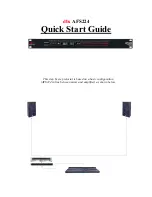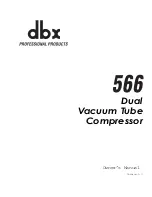
INSTRUCTIONS TO USER
Dear Users, thank you very much for purchasing the UP-200 Pulse Oximeter.
In case of modifications and software upgrades, the information contained in
this document is subject to change without notice.
The Manual describes, in accordance with the Pulse Oximeter’s features and
requirements, product features, functions, specifications, correct methods for:
transportation, use, repair, maintenance and storage, as well as the safety
procedures to protect both the user and equipment. Refer to the respective
chapters for details.
Please read the Manual very carefully before using this equipment. These
instructions describe the operating procedures to be followed strictly, failure to
follow these instructions can cause measuring abnormality, equipment damage
and personal injury. The manufacturer is NOT responsible for the safety,
reliability and performance issues and any monitoring abnormality, personal
injury and equipment damage due to user’s negligence of the operation
instructions. The manufacturer’s warranty service does not cover such faults.
Due to product updates, the specific products you received may not be
totally in accordance with the description of this User Manual. We regret any
confusion.
This product can be used repeatedly. Its useful life is 3 years.
If you have any questions regarding to the use of this product, please call us at
one of the numbers listed at the end of this manual.
WARNING:
• An uncomfortable or painful feeling may appear if using the oximeter
continuously, especially for the microcirculation barrier users. It is
recommended that the sensor should not be applied to the same
finger for over 2 hours.
• For individual users, ensure proper placement of the oximeter. The
oximeter cannot be clipped on the edema and tender tissue.
• The light (the infrared is invisible) emitted from the oximeter is harmful
to the eyes, do not stare at the light.
• User cannot use enamel or other fingernail polish.
• User’s fingernail cannot be too long.
• Please review the relative content about the clinical restrictions and
caution.
• This oximeter is not intended for treatment.
The User Manual is published by our company. All rights reserved.
1 SAFETY
1.1 Instructions for Safe Operations
• Check the main unit and all accessories periodically to make sure that
there is no visible damage that may affect user’s safety and monitoring
performance. It is recommended that the oximeter should be inspected at
least once a week. When there is obvious damage, stop using the oximeter.
• Necessary maintenance must be performed by qualified service engineers
ONLY. Users are not permitted to maintain it by themselves.
• The oximeter cannot be used together with devices not specified in User’s
Manual. Only use the type of accessories included in the package.
• This product is calibrated before leaving factory.
1.2 Warnings
• Explosive hazard—DO NOT use the oximeter in environment with
inflammable gas such as some ignitable anesthetic agents.
• Do not use this oximeter if you are allergic to rubber.
• The disposal of the oximeter and its accessories and packaging (including
batteries, plastic bags, foam inserts and paper boxes) should follow the
local laws and regulations.
• Please check the packing before use to make sure the oximeter and
accessories are in accordance with the packing list, or else the oximeter
may not work properly.
• Please don’t measure this oximeter with a functional tester for the
oximeter’s related information.
• Warning against servicing and maintenance while the equipment is in use.
• No modification of this equipment is allowed.
• The user is an intended operator.
• The probe of the oximeter is the applied part.
1.3 Attentions
• Keep the oximeter away from dust, vibration, corrosive substances,
explosive materials, high temperature and moisture.
• If the oximeter gets wet, discontinue use.
• Do not use immediately after moving it from a cold environment to warm or
humid environment.
• Do not operate buttons on front panel with sharp materials.
• Do not use high temperature or high pressure steam disinfection of the
oximeter. Refer to chapter (8) for instructions of cleaning and disinfection.
• Do not immerge the oximeter in liquid. When it needs cleaning, please wipe
its surface with medical alcohol by soft material. Do not spray any liquid on
the oximeter directly.
• When cleaning the oximeter with water, the temperature should be lower
than 60 °C.
• As to the fingers which are too thin or too cold, it would probably affect the
normal measure of the users’ SpO
2
and pulse rate, use a larger finger such
as thumb or middle finger and place finger deeply into the probe.
• Do not use the oximeter on infant or neonatal users.
• The product is suitable for adults (weight should be between 40 kg to 110
kg).
• The oximeter may not work for all users. If you are unable to achieve stable
readings, discontinue use.
• The update period of data is less than 5 seconds, which is changeable
according to different individual pulse rate.
• The waveform is normalized. Please read the measured value when the
waveform on the screen is steady. This measured value is optimal value,
and the waveform at the moment is the standard one.
• If some abnormal conditions appear on the screen during test process, pull
out the finger and reinsert to restore normal use.
• The lanyard is made from non-allergy material, if you are sensitive to the
lanyard, stop using it. In addition, do not wear it around the neck to avoid
harm to the users.
• The oximeter does not have low-voltage alarm function, it only shows the
low-voltage. Please change the battery when the battery energy is used up.
• The instrument does not have alarm function. Do not use the device in
situations where alarms are required.
• Batteries must be removed if the oximeter is going to be stored for more
than one month, or else batteries may leak.
• A flexible circuit connects the two parts of the oximeter. Do not twist or pull
on the connection.
1.4 Indication for Use
The Pulse Oximeter is a non-invasive device intended for the spot-check of
saturation of arterial hemoglobin(SpO
2
) and the pulse rate of adult in home use
environments. This oximeter is not intended for continuous monitoring. The
device can be used multiple times.Pulse oximeter intended for wellness use.
2 OVERVIEW
The pulse oxygen saturation is the percentage of HbO
2
in the total Hb in the
blood - the O
2
concentration in the blood. It is an important bio-parameter for
respiration. This Pulse Oximeter was developed for the purpose of measuring
the SpO
2
more easily and accurately. At the same time, the oximeter can
measure the pulse rate.
The Pulse Oximeter features a compact design, low power consumption,
and convenient operation. It is only necessary for user to put one finger into
a fingertip photoelectric sensor for measurement, and a display screen will
directly show measured value of Hemoglobin Saturation.
2.1 Features
• Easy to use
• Easy to view with a display that changes direction automatically.
• Small, lightweight design
• Convenient carrying case.
• Low power consumption – allowing for 20 hours of continuous operation on
a new set of batteries.
• Standby mode when no signal is received within 5 seconds.
2.2 Major Applications and Scope of Application
The Pulse Oximeter can be used in measuring pulse oxygen saturation and
pulse rate through finger. The product is suitable for family use (It can be used
before or after doing sports, and it is not recommended to use the oximeter
during sports activity).
The problem of overrating would emerge when the user is
suffering from toxicosis which caused by carbon monoxide, the
oximeter is not recommended to be used under this
circumstance.
2.3 Environment Requirements
Storage Environment
a. Temperature: -40°C ~ +60°C
b. Relative humidity: ≤95%
c. Atmospheric pressure: 500hPa ~ 1060hPa
Operating Environment
a. Temperature: 10°C ~ 40°C
b. Relative humidity: ≤75%
c. Atmospheric pressure: 700hPa ~ 1060hPa
3 ACCESSORIES
• 1 Lanyard
• 2 Batteries
• 1 User Manual
• 1 Carrying Case
4 SET UP
4.1 View of the Front Panel
pulse bar graph
pulse waveform
Low-battery indication SpO
2
pulse rate
button
Figure 1: Front View
4.2 Battery
Step 1.Insert the two AAA size batteries in the proper direction (Refer to Figure
2).
Step 2. Put the cover back on.
Please take care when you insert the batteries for the improper
insertion may damage the device.
Figure 2: Batteries Installation
4.3 Attaching the lanyard
Step 1. Put the thin loop through the hole on the oximeter.
Step 2. Put the lanyard strap through the thin loop and tighten.
Figure 3: Attaching the Lanyard
Figure 4: Put Finger in Position
5 USING THE OXIMETER
5.1 Insert the two batteries properly to the direction, and then replace the
cover.
5.2 Open the clip as shown in Figure 4.
5.3 Place your finger into the rubber cushions with the nail towards the top of
the oximeter, and then clip your finger.
5.4 Press the switch button once on front panel.
5.5 Do not shake your finger and remain still.
5.6 See your results from screen display.
5.7 The button has two functions. When the oximeter is in standby mode,
pressing the button can exit it; When the oximeter is in operation status,
pressing the button for longer can change brightness of the screen.
5.8 The oximeter changes display direction according to the direction you
hold it.
Fingernails and the luminescent tube (emission tube) should be
on the same side.
6 PRINCIPLE AND CAUTION
6.1 Principle of Measurement
Principle of the Oximeter is as follows: An experience formula of data process
is established taking use of Lambert Beer Law according to Spectrum
Absorption Characteristics of Reductive Hemoglobin (Hb) and Oxyhemoglobin
(HbO
2
) in glow & near-infrared zones. Operation principle of the instrument is:
Photoelectric Oxyhemoglobin Inspection Technology is adopted in accordance
with Capacity Pulse Scanning & Recording Technology, so that two beams
of different wavelength of lights can be focused onto human nail tip through
perspective clamp finger-type sensor. Then measured signal can be obtained
by a photosensitive element, information acquired through which will be shown
on screen through treatment in electronic circuits and microprocessor.
Glow and Infrared-ray
Emission Tube
Glow and Infrared-ray
Receipt Tube
Figure 5: Operating Principle
6.2 Caution
1. The finger should be placed properly (see the attached illustration of this
manual, Figure 4), or else it may cause inaccurate measurement.
2. The SpO
2
sensor and photoelectric receiving tube should be arranged in a
way with the subject’s arteriole in a position there between.
3. The SpO
2
sensor should not be used at a location or limb tied with arterial
canal or blood pressure cuff or receiving intravenous injection.
4. Make sure the optical path is free from any optical obstacles like rubberized
fabric.
5. Excessive ambient light may affect the measuring result. It includes
fluorescent lamp, dual ruby light, infrared heater, direct sunlight etc.
6. Strenuous action of the subject or extreme electrosurgical interference may
also affect the accuracy.
7. User cannot use fingernail polish.
6.3 Clinical Restrictions
1. As the measurement is taken on the basis of arteriole pulse, substantial
pulsating blood flow of subject is required. For a subject with weak pulse
due to shock, low ambient/body temperature, major bleeding, or use of
vascular contracting drug, the SpO
2
waveform (PLETH) will decrease. In
this case, the measurement will be more sensitive to interference.
2. For those with a substantial amount of staining dilution drug (such as
methylene blue, indigo green and acid indigo blue), carbon monoxide
hemoglobin (COHb), methionine (Me+Hb) or thiosalicylic hemoglobin, and
some with icterus problem, the SpO
2
determination by this monitor may be
inaccurate.
3. Drugs like dopamine, procaine, prilocaine, lidocaine and butacaine may also
cause inaccurate SpO
2
measurements.
4. As the SpO
2
value serves as a reference value for anemic anoxia and
toxic anoxia, some users with serious anemia may report good SpO
2
measurement.
7 TECHNICAL SPECIFICATIONS
1.
Display Format:
LCD Display
SpO
2
Measurement Range:
0 ~ 100%
Pulse Rate Measuring Range:
30 bpm ~ 250 bpm
Pulse Wave Display:
bar-graph display and the waveform display.
2.
Power Requirements:
2 × 1.5 V AAA alkaline battery (or rechargeable
battery), adaptable range: 2.6 V ~ 3.6 V.
3.
Power Consumption:
Less than 30 mA.
4.
Resolution:
1% for SpO
2
and 1 bpm for Pulse Rate.
5.
Measurement Accuracy:
SpO2: ±2% for 70% ~ 100%; not applicable if < 70%
Pulse Rate: ±2 bpm or ±2% (whichever is larger)
Clinical Trial: SpO
2
regression plot & Bland–Altman plot,Refer to Figures
6 and 7.
6.
Measurement Performance in Weak Filling Condition:
SpO
2
and pulse
rate can be shown correctly when pulse-filling ratio is 0.4%. SpO
2
error is
±4%, pulse rate error is ±2 bpm or ±2% (select larger).
7.
Resistance to surrounding light:
The deviation between the value
measured in the condition of man-made light, indoor natural light and
darkroom is less than ±1%.
8.
It is equipped with a switch function:
The product will enter standby
mode when no signal is in the product within 5 seconds.
9.
Optical Sensor
Red light (wavelength is 660 nm, 6.65 mW)
Infrared (wavelength is 905 nm, 6.75 mW)
Figure 6: SpO
2
regression plot
Figure 7: Bland–Altman plot
8 REPAIRING AND MAINTENANCE
• Please change the batteries when low-voltage is displayed on the screen.
• Clean the surface of the oximeter before using. Wipe the oximeter with
medical alcohol first, and then let it dry in air.
• Using the medical alcohol to disinfect after use prevents cross infection for
next use.
• Please take out the batteries if the oximeter is not used for a long time.
• The oximeter can be transported by ordinary conveyance or according to
transport contract. The oximeter can not be transported mixed with toxic,
harmful, corrosive material.
• The best storage environment of the oximeter is - 40ºC to 60ºC ambient
temperature and not higher than 95% relative humidity.
• There is no need to calibrate the oximeter.
High-pressure sterilization cannot be used on the oximeter.
Do not immerse the oximeter in liquid.
It is recommended that the oximeter should be kept in a dry
environment. Humidity may reduce the useful life of the oximeter,
or even damage it.
Pulse Oximeter User Manual
UP-200




















